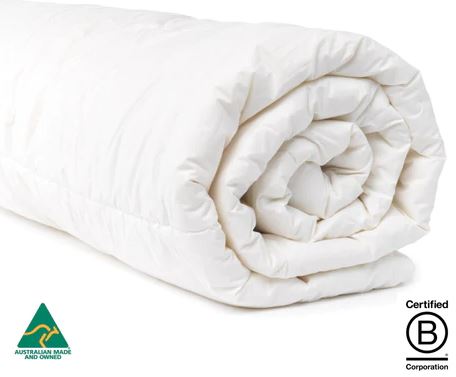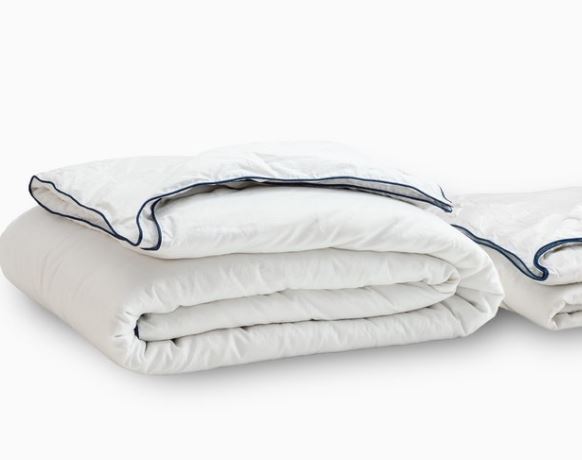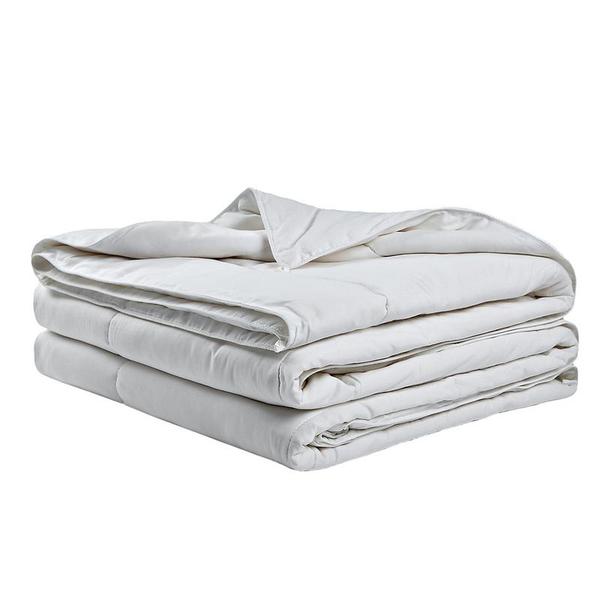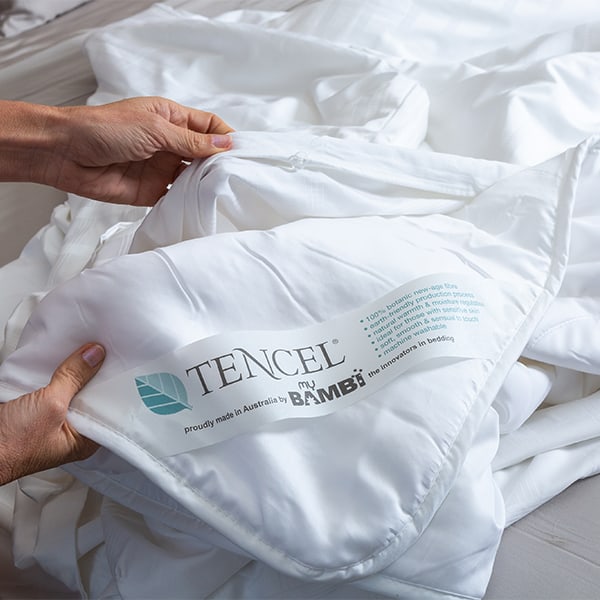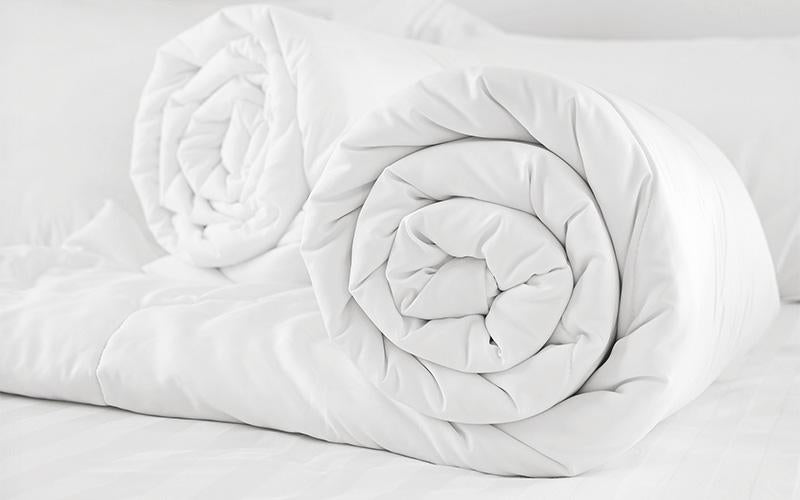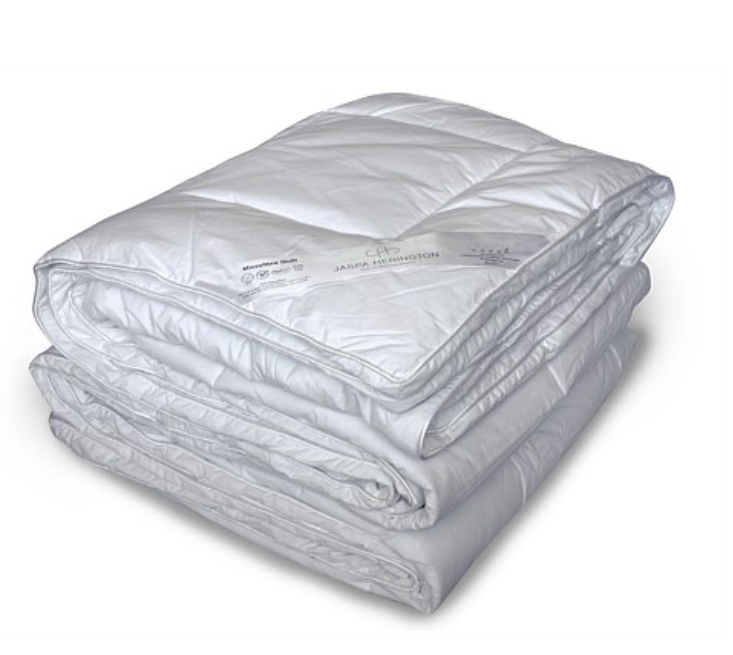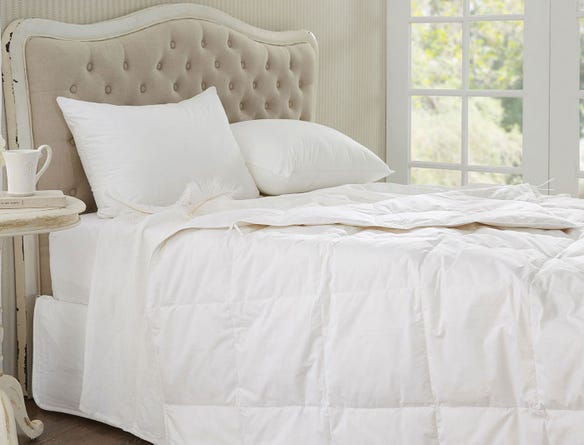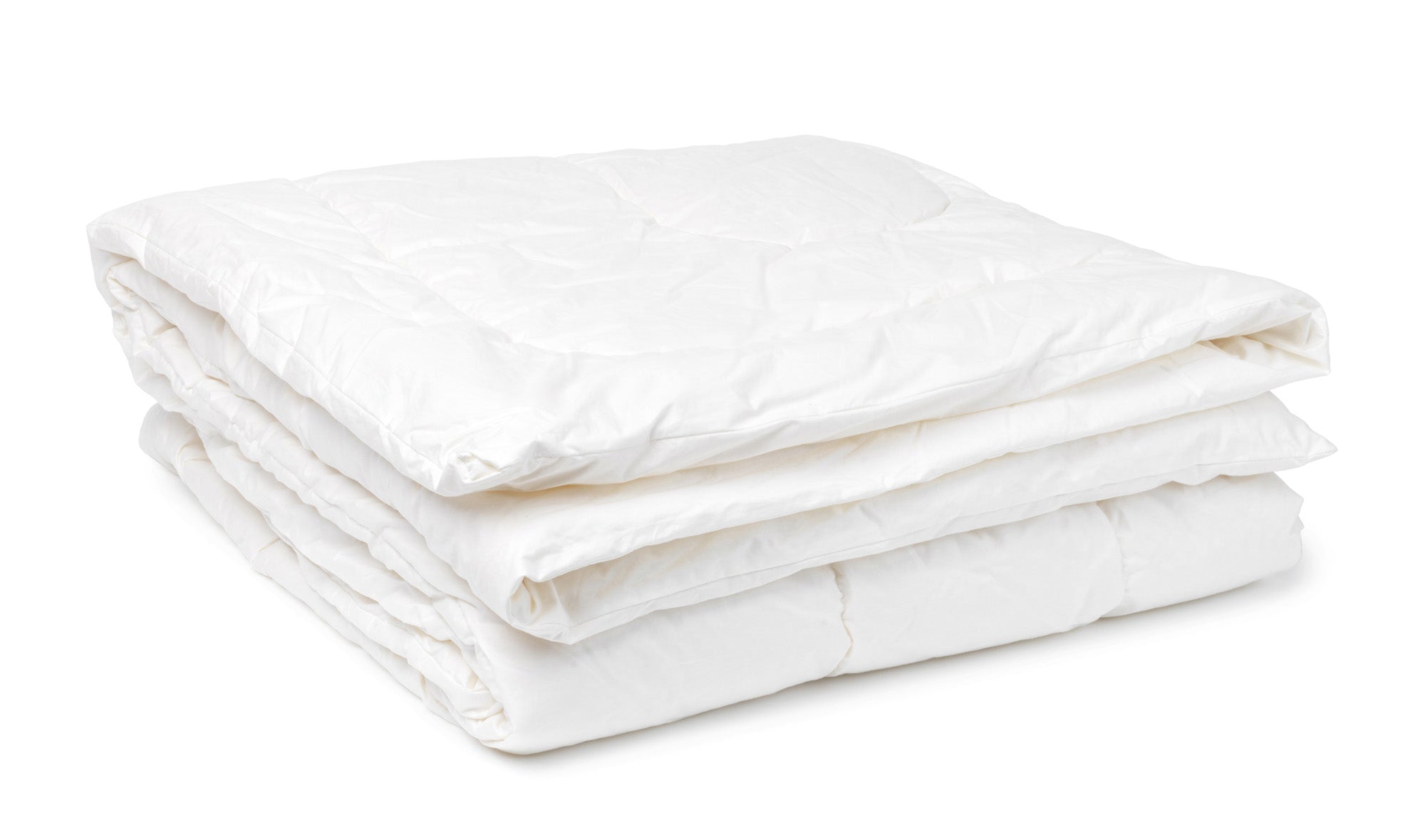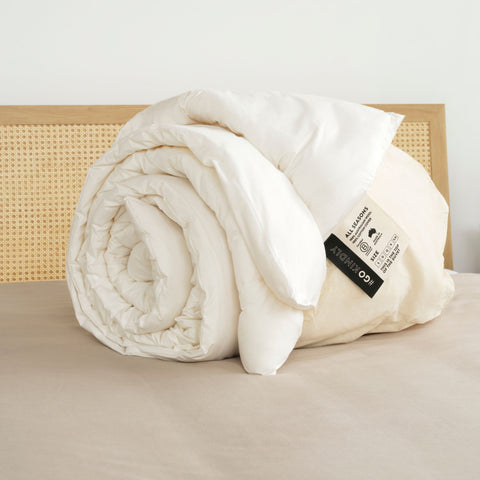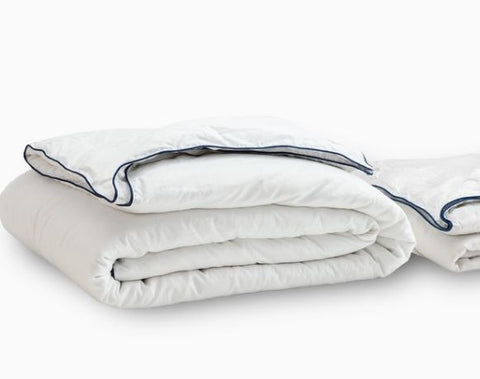Best Quilt in Australia (2025 reviews)

This guide will help you find the best Quilt in Australia for 2025.
During Spring an All Seasons Quilt weight is ideal. I recommend a breathable, mid-weight quilt.
We have provided a guide to finding the best quilt below that considers your body temperature and local climate. From summer, all season and winter options and different fillings, it can be overwhelming choosing the right quilt for you. To help you, we have listed our top Australian picks below.
THE TOP 10 BEST QUILTS IN AUSTRALIA
- Best Wool Quilt: #GoKindly Wool Quilt
- Best 2 in 1 Quilt: Ecosa Luxe Quilt
- Best Summer Quilt: Ettitude
- Best All Seasons Luxury Australian: Bambi
- Best Lightweight Quilt: Sheridan
- Best for Allergy Quilt: Tontine
- Best Microfibre Quilt: Herrington
- Best Winter Down: Bed Bath N’ Table
- Best Cotton Quilt: PureZone
- Best Luxury Silk: BeddingCo
A guide to finding the best Quilt
Before you choose a quilt there are some key considerations:
- Breathability. As we head into winter you will be looking for a quilt that will keep you warm. However, you also want the quilt to be breathable so you don't overheat during the night. Choosing a quilt that is made from natural materials will provide greater breathability and temperature regulation.
- Material. There are a range of quilt materials including Australian wool quilts, cotton quilts, bamboo, feather, tencel and microfibre. quilts. An Australian sleep study compared cotton, polyester and wool for sleepwear performance. Wool was the best performer, while polyester was the worst as it retained too much heat, resulting in a hot and uncomfortable sleep.
- Weight. GSM (Grams Per Square Metre) is often used to describe the thickness. This is an indicator of warmth but this can vary based on the quilt material.
- Budget. Generally, a polyster quilt will be cheapest while a down quilt will be the most expensive. Wool quilts are mid range.
Quilts come in a range of fibres, each with pro’s and cons. Whatever you decide on, we recommend getting the highest quality you can afford, as they will usually last longer and contribute to less waste and landfill. Most quilt casings are made from 100% cotton and/or bamboo. Also consider if you are an allergy sufferer or co-sleep with someone who is. If you are a hot sleeper we recommend buying a breathable quilt. A summary of the key factors when choosing the perfect quilt are:
- Quilt material
- Weight
- Breathability
- Seasons
- Warmth rating
- Allergy sufferer or other personal needs
Quilt Materials
A consideration of the type of quilt material is whether you prefer a lightweight versus heavy weight quilt. Weighted blankets have become popular because the pressure stimulation is believed to relax your body. If you are looking for a heavier quilt we recommend a wool quilt because of its natural properties that allow for great breathability compared to other materials.
Here are some key points about the most popular filling you should consider:
Wool Quilts: Wool is a natural fibre that is breathable with medium to heavy weight. One of the most popular choices as it is suitable for most sleepers. A quality Australian wool quilt will last +10 years if cared for appropriately. Hypoallergenic which basically means that it is unlikely to cause an allergic reaction.
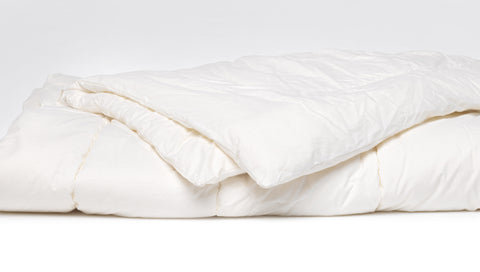
Cotton Quilts: Cotton is a natural fibre with a soft feel and light weight (although can be made thicker in some cases). A good choice for those that are hot sleepers and vegan. Similar to wool it is hypoallergenic.
Bamboo Quilts: The Bamboo Quilts are one of the fastest growing quilts. They are natural, heavier-duty and vegan friendly. The are a good choice if you are in a warmer climate or are a hot sleeper. They do take longer to dry but a good option for those will allergies.
Silk: A silk quilt offers a lightweight option with a luxury feel. As a natural fibre they have superior breathability. Cost is the biggest issue as they tend to be expensive and can be hard to care for.
Down and feather Quilts: natural, however not ethically sourced. Hard wearing and long lasting. They are known for being fluffy, comfy and warm.
Polyster and Microfibre Quilts: A man made material that is easy to care as they are generally machine washable and fast air drying. Easy to clean for children and light weight (Microfiber is more lightweight than standard poly). They are durable and good value buy for those with allergies, while still having that fluffy feeling of down and feather.
| Materials | Pros | Cons |
| Wool | Natural, Breathable, Long lasting, Heavier style quilt | Not suitable for vegans |
| Cotton | Soft, Light and natural | Lacks warmth |
| Bamboo | Eco friendly, breathable and good choice for hot sleepers | Expensive |
| Silk | Luxury feel | Not easy to care for |
| Down | Warm to extra warm, Soft luxury feel | Expensive, not suitable for vegans or hot sleepers |
| Polyester | Affordability, Easy to care for | Not right for hot sleeper |
Quilt Weights - Thickness and GSM
GSM (Grams Per Square Metre) is often used to describe the thickness. It doesn’t necessarily equal warmth, but can be an indicator. A suggested indicator is:
- 250GSM for warmer climates
- 300GSM to 400GSM for moderate or 'All Seasons' and
- +450GSM+ for colder climates.
Please be aware that the level of warmth will vary based on the quilt material.
Weight and space considerations Winter doona’s take up space – they’re usually heavier and bulkier. So lets be real about the fact you’ll need to store them in summer in Australia. Think through where and how you would store yours. If you have limited space, we suggest that a mid-range option might be suitable, which will be less bulky and allow you to put it on top of our existing summer doona for extra warmth. The downside of this is that you will need 2 covers.
Wool and down tend to be heavier than cotton and bamboo, so it does depend on the fibre you choose.
A common question is what is high and low loft? Generally this is referring to how the quilt sits on the bed and whether it is flat (low loft) or whether it has more body and sits higher (high loft). Here is a picture comparing the two quilt styles (low being on the left and high being on the right).
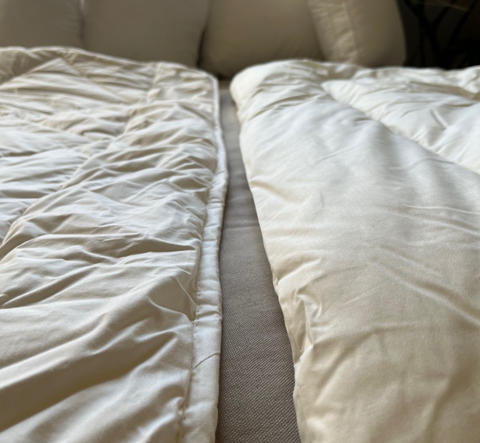
Best Quilt Material Research
An Australian sleep study explored the impact on sleep quality when wearing sleepwear cotton, polyester and wool. They tested participants for a variety of sleep variables including time taken to get to sleep, wakefulness, and Rapid Eye Movement (REM).
Based on the study the worst performer was polyester. One of the key reasons is that it has 'poor moisture buffering compared to the more hygroscopic natural fibres', being cotton and wool. Research has shows that a fall in core body temperature is connected to falling asleep. Broadly, polyester is retaining too much heat to help you fall asleep quickly.
Interestingly the study showed that Cotton had similar sleep quality results to polyester although it does have a better level of breathability. The best performer was wool. The natural 'fibre properties of the sleepwear' make wool a superior material that supports quality sleep. The results showed wool was the best material for time to take to sleep, REM and participants had less fragmented sleep.
Best Quilt for Australian Seasons and Locations
You want to research for a range of quilts that considers your season, climate and region. For instance, Queenslanders tend to go with bamboo, lighter wool filling and cottons as they are more breathable. Melbournians and Tasmanians tend to need heavier wool and down.
We recommend that you change your quilt for different seasons to obtain the most comfortable temperature.
Cheaper quilts tend to have high heat retention that means that they do not regulate your body temperature well especially is warmer climates. Here are the different quilt styles for different seasons:
- Summer Quilt: Dry warm climates lend themselves to fillings such as bamboo, cotton and microfibre. Alternatively go with a light filling wool quilt. These are lighter, more breathable options which are better suited to warm and hot sleepers and warm climates.
- Winter Quilt: cold climates lend themselves to heavier fillings such as wool and down, and a heavy style cotton-wadding. Heavier microfibres are also suitable.
- All Seasons: While the name suggests this quilt can be used all year round, it should instead be called 'Most Seasons'. Unfortunately, no quilt will be perfect for 365 nights of the year. The All Seasons has a weight that is in the middle of Summer and Winter. For most of Australia this is a good option if you are wanting to buy only one quilt.

KEY TIP: If you have a budget for just one quilt then choose one that will suit you for most of the year and in the colder months use a blanket over the quilt to add more warmth.
Quilt Sizes
Quilts come in standard sizes, from single through to King (and even Super King!). It depends on the size of your mattress and bed frame, which you would choose. Also take into consideration your bed linen – and match your quilt size to your linen to ensure you do not need to replace it with a new quilt.
As a guide, we find that going up a size (for instance using a queen on a double bed) can be a good way to get good coverage when you’re sleeping with someone who moves a lot in their sleep. This can also be a good way to get extra warmth from a summer or all-season quilt. The extra coverage ensures that cold air doesn’t sneak in
| Quilt Size | Dimensions |
| Single | 140cm x 210cm |
| Double | 180cm x 210cm |
| Queen | 210cm x 210cm |
| King | 240cm x 210cm |
| Super King | 270cm x 240cm |
What is the difference between a Duvet, a Doona and a Quilt?
Nothing. They’re terms used interchangeably in Australia. Traditionally a Quilt was a hand sewn cotton blanket, and it is sometimes still a way to describe a hand-made patchwork quilt. However usually Duvet, Doona and Quilt are used interchangeably in Australia.
Is a quilt a blanket?
A blanket is traditionally a woven (usually woollen or cotton) single layered cover, where a quilt is a filled, double layed construction, which a cover is placed over.
What is the best quilt filling?
It depends on your preference, your climate and your values. Common fillings are wool, down, feather, microfibre, cotton and bamboo. All have pro’s and cons.
Which Quilts are the warmest?
Generally down and wool are the material that is best for warmth. However, the Warmth of a quilt depends on the thickness (or GSM) of the quilt inner. All inners can be warm, depending on the thickness of the material, and the breathability you require for your climate and or body temperature.
Is a quilt the same as a doona?
Yes, in Australia Doona and Quilt are used interchangeably.
Are wool quilts good?
Its difficult to classify as quilt as ‘good’ or ‘bad’ they all have a niche for certain climates and body-warmth types. Some are also better for allergies, some are vegan, some are easier to care for than others. Wool is a great quilt, if you’re after a heavier, dry clean option. See some options below.
Is 500gsm wool quilt warm?
500 GSM is considered as 'warm'. Anything between 350 to 450 GSM is called ‘all seasons.’ Anything above 450 GSM is suitable for winter and cooler climates.
What is the difference between a quilt and a bedspread?
A bedspread is designed to cover a bed, as a top covering. It is usually single layed, and not designed for warmth. It has no filling, and is usually decorative.
Fill Pattern
Fill Pattern of your Duvet refers to how the fill is kept in place inside your duvet. With feathers, wood and microfibre, you need to ensure that the fill is sewn into pockets which hold it into place, and ensure the fill is kept consistent. With cheaper duvets you may find that the fill patterns are not consistent and this will effect the warmth of the duvet. Most Duvets are filled into a square or diamond grid pattern, to keep the fill consistent.
Cleaning and Maintenance
Machine washable: You’ll find that cottons, bamboos and microfibres are easy care, machine washable doona’s. Usually they can be tumble dried – but we recommend air drying where possible. This gives the fibres time to rejuvenate, and sunshine kills germs.
These fibres are good for children for instance, who may have accidents or get doona’s grubby.
- Dry Clean - Down and Wools are not as easy to care for – and most are recommended for dry-clean only. We have personally washed ours on slow, gentle cycles, and air dried with no problems – but manufacturers do recommend dry cleaning only.
- Sunshine – we’re big fans of sunshine for airing and refreshing bedding. Sunshine and some fresh air rejuvenates and kills germs
- Guarantees - Most brands offer a 5 year warranty or guarantee.
Storage ideas
Some storage options are underbed storage in the existing bag your doona comes in, simply fold it back up and store it under your bed. Other options include blanket boxes from Ikea and Kmart, or even folding it into an existing cover and storing it up high in a wardrobe or shelve.
Wherever you store your doona’s in the ‘off’ season, make sure they are will protected and covered from dust mites. Especially if you are prone to allergies.
FINAL THOUGHTS
A final tip to finding the best Australian made quilt is making sure it is locally made. You can do this by looking out for the Australian made logo or visiting the Australian made website.
We hope this has helped you find the perfect Quilt so you can sleep well.

